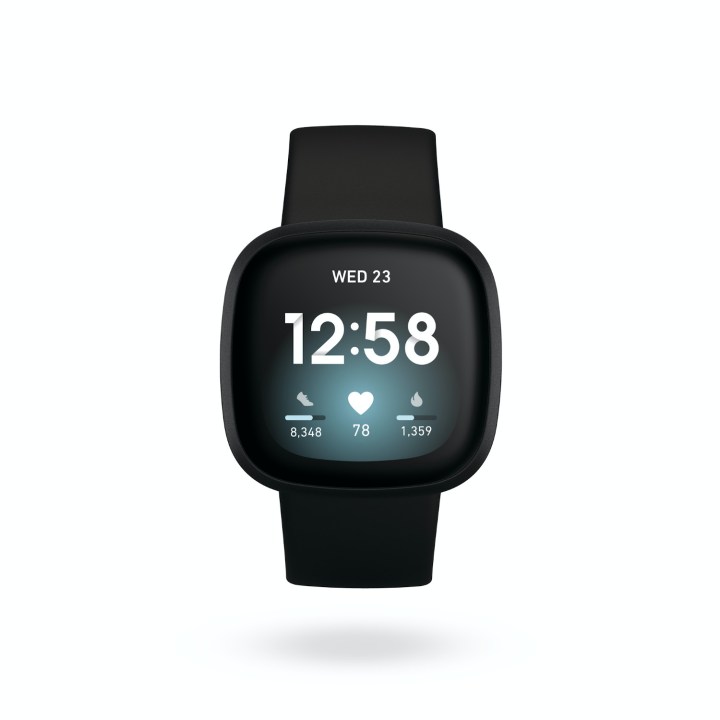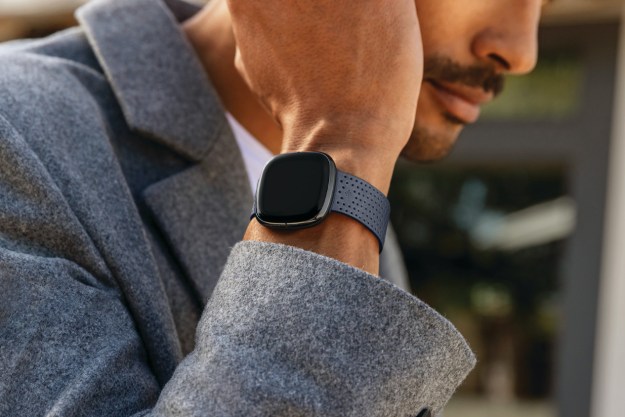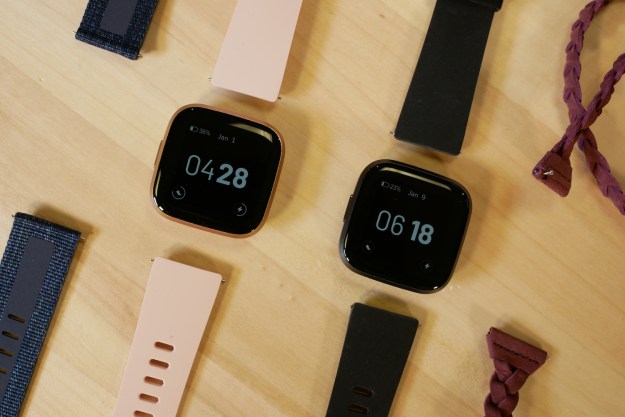Fitbit is stepping up its smart fitness tracker game. The company has taken the wraps off of its 2020 lineup of smart health-focused watches and bands, headlined by the new Fitbit Sense, which is aimed at offering the best of Fitbit’s fitness-tracking capabilities.
Fitbit also unveiled the improved Versa 3 and Inspire 2. All three devices offer new features that Fitbit hasn’t offered before and represent excellent value for money compared to what’s currently on the market.
Here’s everything you need to know about Fitbit’s suite of new devices.
Fitbit Sense
- 1. Fitbit Sense
The Fitbit Sense is the smartest and most powerful device in Fitbit’s 2020 lineup. Along with a series of new fitness-tracking features, the device also steps up its day-to-day smartwatch capabilities previously unavailable on Fitbit devices — like the fact that it offers the ability to use either Google Assistant or Amazon Alexa straight on your wrist. The Fitbit Versa 2 had Alexa, but adding Google to the mix will help make the watch a whole lot more useful for many people. On the Sense, you can ask your digital assistant to start tracking certain activities, plus it can control everything
Assistant support is really an added bonus here — the real reason to buy a Fitbit is its awesome fitness tracking features. The Fitbit Sense offers all the fitness tracking you know and love from previous Fitbit models, with a slew of new features, too.
Perhaps the biggest fitness-tracking addition to the Sense is an (FDA-pending) ECG sensor, which can detect early indications of conditions like Atrial Fibrillation using its built-in app. As someone who was first diagnosed with aFib thanks to the Apple Watch‘s own ECG feature, this is a very welcome addition — and will hopefully help more people find out that they have aFib before it becomes a more serious issue.
The Sense is aimed at helping people take control of their mental health, too. Fitbit is placing a heavy emphasis on stress management, and the Sense has a built-in EDA Scan app that can track the body’s electrodermal activity, which is often an indicator of stress. Fitbit claims a six-plus-day battery life, depending on how often you use the fitness-tracking features and built-in GPS, and the device comes with a six-month free trial to Fitbit Premium. The device also has sleep tracking, though that will of course cut back on battery life.
The Sense, in general, may represent a shift toward more premium devices for Fitbit, which has long held the Versa line as its flagship series. As more people want a premium smartwatch, without necessarily shelling out the cash for an Apple Watch, Fitbit clearly wants to be in serious consideration.
The Fitbit Sense is now available for $330, which makes the device one of Fitbit’s most expensive yet. It is still $70 cheaper than the cheapest Apple Watch Series 5, however, for Apple users, the Apple Watch still looks to offer a more well-rounded feature set.
Fitbit Versa 3
- 1. Fitbit Versa 3
The Versa line may now be second tier to the Sense, but the new Fitbit Versa 3 still looks to offer a lot. Perhaps a better name for the Versa 3 would be the”Fitbit Sense Lite,” considering the fact that it offers a similar design, with many of the same smart features as the Sense. The best feature that’s making it to the Versa 3 from the Sense is support for both Google Assistant and Alexa.
When it comes to fitness tracking, the new device has a few new tricks up its sleeve. Unlike the Versa 2, you’ll get a built-in GPS, which is critical for runners and bicyclists and will unlock features like heart zone maps. And, you’ll get the same six-plus-day battery life, with support for fast charging — which Fitbit says can get you a day of battery life in 12 minutes charging.
Like previous models, you’ll get a heart rate monitor, a swim-proof design to up to 50 meters, on-device music storage (depending on your streaming service), and plenty more.
The Fitbit Versa 3 is available for $230, a full $100 less than the Sense. The Versa 3 also supports the same range of accessories that are available for the Sense. That makes it a solid choice for those that don’t need the features on offer by the Sense and could stand to save a little cash. That lower price, paired with new on-device GPS, could make the Versa 3 the more enticing of the two.
Fitbit Inspire 2
Even though the world is generally moving toward do-it-all smartwatches, Fitbit isn’t ditching the traditional fitness tracker just yet. Alongside the two smartwatches, the company is also launching the Fitbit Inspire 2, which offers many of the same fitness-tracking features as the more expensive options, in a slim and stylish band.
The design of the band is slightly different from the original Inspire, with the bands and main tracker being a little more defined.
Inside, the tracker is pretty advanced. You won’t get the ECG sensor on offer by the Sense, nor GPS like the Sense and Versa 3, but you will still get general step tracking, a heart rate monitor, sleep tracking, and water resistance to up to 50 meters. And, thanks to the lower-power display, the device has a 10-day battery life — that’s precisely the reason why people still love dedicated trackers like this. Like other new Fitbit devices, there’s a bigger emphasis on mental health, too. For example, the Relax app on the device offers guided breathing exercises.
Perhaps the best thing about the Inspire 2, of course, is the price. It comes in at only $100, which makes it an excellent choice for those who want general fitness tracking in a smaller package without all of the extras on offer by the smartwatches.
Editors' Recommendations
- Fitbit Versa 4 vs. Fitbit Sense 2: Which new Fitbit wins?
- Fitbit leak reveals the upcoming Sense 2, Inspire 3, and Versa 4
- Should you buy a Fitbit on Black Friday 2021?
- Fitbit Versa 3 vs. Fitbit Versa 2
- Fitbit Versa 2 vs. Fitbit Versa








